#liberals calling me brave for talking about liking feminine men and calling them pretty when to me i didn't even think about it.
Explore tagged Tumblr posts
Text
can't wait to see all my works touted as having so much diverse representation simply by virtue of all my characters being self-inserts.
#/not really in an especially cynical or mocking manner it's just funny because i tend to not think of these things as i'm actually writing.#like i'm just writing what i know but people like to act like i'm making a big statement. and the thing is that i am. i am. that's true.#but it's also because 'statement' is intrinsic to my personhood and existence in this society as a minority !#myevilposts#liberals calling me brave for talking about liking feminine men and calling them pretty when to me i didn't even think about it.#so fucking crazy to me. like even a lot conservatives don't care when i do this.#like if you aren't a conservative you don't need to be pointing how 'weird' that is out to me. i already know#that conservatives don't like me and think i am a freaky sub-human weirdo. why are YOU acting like i'm being abnormal though?#i've spent a lot of time living in deeply conservative areas with conservative people btw.#like 'i felt unsafe going outside' and 'i got called slurs' levels and i still am out here being like this.#yes yes i'm making a statement by existing yes. stop treating me like a freak show performer when i'm actually just one of you though.#it's this trend of trying to be woke but just back-hand complimenting people or straight up insulting that bothers me.
0 notes
Text
America’s Gay Men in WW2

World War Two was a “National Coming Out” for queer Americans.
I don’t think any other event in history changed the lives of so many of us since Rome became Christian.
For European queers the war brought tragedy.
The queer movement began in Germany in the 1860s when trans activist Karl Ulrichs spoke before the courts to repeal Anti-Sodomy laws. From his first act of bravery the movement grew and by the 1920s Berlin had more gay bars than Manhattan did in the 1980s. Magnus Hirschfeld’s “Scientific Humanitarian Committee” fought valiantly in politics for LGBT rights and performed the first gender affirmation surgeries. They were a century ahead of the rest of the world.
The Nazis made Hirschfeld - Socialist, Homosexual and Jew - public enemy number one.
The famous image of the Nazis burning books? Those were the books of the Scientific Humanitarian Committee. Case studies of the first openly queer Europeans, histories, diaries - the first treasure trove of our history was destroyed that day.
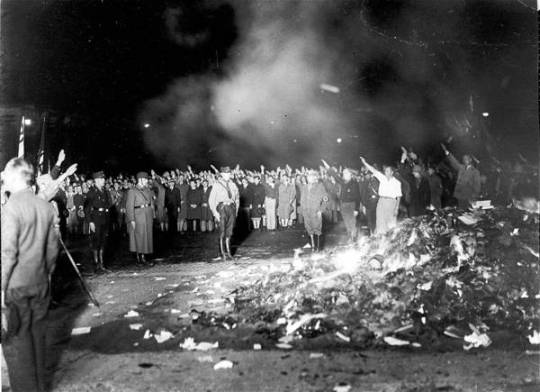
100,000 of us were charged with felonies. As many as 15,000 were sent to the camps, about 60% were murdered.
But in America the war brought liberation.
In a country where most people never even heard the word “homosexual” , historian John D’emilio wrote the war was “conducive both to the articulation of a homosexual identity and to the more rapid evolution of a gay subculture. (24)” The war years were “a Watershed (Eaklor 68)”
Now before we begin I need to give a caveat. The focus of this first post is not lesbians, transfolk or others in our community. Those stories have additional complexity the story of cisgender homosexual men does not. Starting with gay men lets me begin in the simplest way I can, in subsequent posts I’ll look at the rest of our community.
Twilight Aristocracy: Being Queer Before the War
I want us to go back in time and imagine the life of the typical queer American before the war. Odds are you lived on a farm and simply accepted the basic fact that you would marry and raise children as surely as you were born or would die. You would have never seen someone Out or Proud. If you did see your sexuality or gender in contrary ways you had no words to express it, odds are even your doctor had never heard the term “Homosexual. In your mind it was just a quirk, without a name or possible expression.
In the city the “Twilight Aristocracy” lived hidden, on the margins and exposed their queerness only in the most coded ways. Gay men “Dropping pins” with a handkerchief in a specific pocket. Butch women with key chains heavy enough to show she didn’t need a man to carry anything for her. A secret language of “Jockers” and “Nances” “Playing Checkers” during a night out. There is a really good article on the queer vernacular here
And these were “Lovers in a Dangerous Time.”
In public one must act as straight as possible. Two people of the same gender dancing could be prosecuted. Cross dressing, even with something as trivial as a woman wearing pants, would run afoul of obscenity laws.

The only spaces we had for ourselves were dive bars, run by organized crime. But even then one must be sure to be circumspect, and act straight. Anyone could be an undercover cop. If a gaze was held to long, or lovers kissed in a corner the bar would be raided. Police saw us as worthy candidates for abuse so beatings were common and the judge would do all he could to humiliate you.
Now Michael Foucault, the big swinging french dick of queer theory, laid out this whole theory about how the real policing in a society happens inside our heads. Ideas about sin, shame, normalcy, mental illness can all be made to control people, and the Twilight Aristocracy was no different.
While cruising a park at night, or settled on the sofa with a lifelong lover, the thoughts of Priests and Doctors haunted them. “Am I living in Sin? Am I someone God could love?” “Is this healthy? Have I gone mad? Is this a true love or a medical condition which requires cure?”
There was no voice in America yet healing our self doubt, or demanding the world accept us as we are. And that voice, the socialist Harry Hay, did not come during the war, but it would come shortly after directly because of it.
Johnny Get Your Gun… And are you now or ever been a Homosexual?
For the first time in their lives millions of young men crossed thousands of miles from their home to the front.
But before they made that brave journey they had another, unexpected and often torturous journey. The one across the doctor’s office at a recruiting station.
In the nineteenth century queerness moved from an act, “Forgive me Father I have sinned, I kissed another man” to something you are, “The homosexual subspecies can be identified by certain physical and psychological signs.”
These were the glory days of patriarchy and white supremacy, those who transgressed the line between masculine and feminine called the whole culture into question. So doctors obsessed themselves with queerness, its origins, its signs, its so called catastrophic racial consequences and its cure.
“Are you a homosexual?” doctors asked stunned recruits.
If you were closeted but patriotic, you would of course deny the accusation. But the doctor would continue his examination by checking if you were a “Real Man.”
“Do you have a girlfriend? Did you like playing sports as a kid?”
If you passed that, the doctor would often try and trip you up by asking about your culture.
“Do you ever go basketeering?” he would ask, remembering to check if there was any lisp or effeminacy in your voice.
Finally if the doctor felt like it he could examine your body to see if you were a member of the homosexual subspecies.
Your gag reflex would be tested with a tongue depressor. Another hole could be carefully examined as well.
Humiliating enough for a straight man. But for a gay recruit the consequences could be life threatening.
Medical authorities knew homosexuals were weak, criminal and mad. To place them among the troops would weaken unit cohesion at the very least, result in treachery at the worst. In civilian life doctors had much the same thing to say.
The recruit needed a cure. And a doctor was always ready. With talk therapy, hypnosis, drugs, electroshock and forced surgeries of the worst kinds there was always a cure ready at hand.
Thankfully the doctors were not successful in their task, one doctor wrote “for every homosexual who was referred or came to the Medical Department, there were five or ten who never were detected. (d’Emilio 25)”
Here’s the irony though, by asking such pointed and direct questions to people closeted to themselves it forced them to confront their sexuality for the first time.
Hegarty writes, “As a result of the screening policies, homosexuality became part of wartime discourse. Questions about homosexual desire and behavior ensured that every man inducted into the armed forces had to confront the possibility of homosexual feelings or experiences. This was a kind of massive public education about homosexuality. Despite—and be-cause of—the attempts to eliminate homosexuals from the military, men with same-sex desires learned that there were many people like themselves (Hegarty 180)”
And then it gave them a golden opportunity to have fun.
The 101st Airborn - Homosocial and Homosexual
“Homosocial” refers to a gender segregated space. And they were often havens for gay men. The YMCA for example really was a place for young gay men to meet.
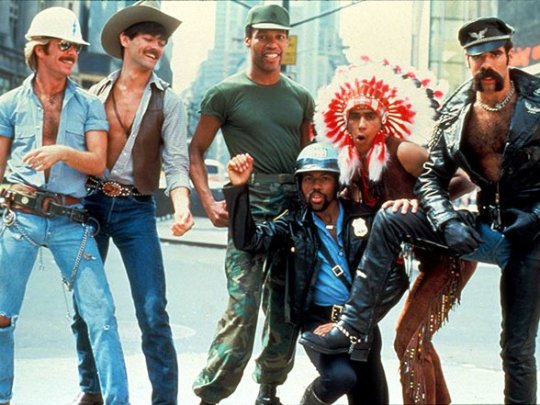
Now the government was already aware of the kind of scandalous sexual behaviour young men can get up to when left to themselves. Two major government programs before the war, the Federal Transient Program and the Civilian Conservation Corps focused on unattached young men, but over time these spaces became highly suspect and the focus shifted to helping family men so as to avoid giving government aid to ‘sexual perversion’ in these homosocial spaces.
But with the war on there was no choice but to put hundreds of thousands of young men in their own world. All male boot camps, all male bases, all male front lines.
The emotional intensity broke down the barriers between men and the strict enforcement of gendered norms.
On the front the men had no girlfriend, wife or mother to confide in. The soldier’s body was strong and heroic but also fragile. Straight men held each other in foxholes and shared their emotional vulnerability to each other. Gender lines began to blur as straight men danced together in bars an action that would result in arrest in many American cities.
Bronski writes, “Men were now more able to be emotional, express their feelings, and even cry. The stereotypical “strong, silent type,” quintessentially heterosexual, that had characterized the American Man had been replaced with a new, sensitive man who had many of the qualities of the homosexual male. (Bronski 152)”
Homosexual men discovered in this environment new freedoms to get close to one another without arousing suspicion.
“Though the military officially maintained an anti-homosexual stance, wartime conditions nonetheless offered a protective covering that facilitated interaction among gay men (d’Emilio 26)”
Bob Ruffing, a chief petty officer in the Navy described this freedom as follows, ‘When I first got into the navy—in the recreation hall, for instance— there’d be eye contact, and pretty soon you’d get to know one or two people and kept branching out. All of a sudden you had a vast network of friends, usually through this eye contact thing, some through outright cruising. They could get away with it in that atmosphere. (d’Emilio 26) ”
Another wrote about their experience serving in the navy in San Diego, “‘Oh, these are more my kind of people.’ We became very chummy, quite close, very fraternal, very protective of each other. (Hegarty 180)”
Some spaces within the army became queer as well. The USO put on shows for soldiers, and since they could not find women to play parts, the men often dressed in drag. “impersonation. For actors and audiences, these performances were a needed relief from the stress of war. For men who identified as homosexual, these shows were a place where they could, in coded terms, express their sexual desires, be visible, and build a community. (Bronski 148)”
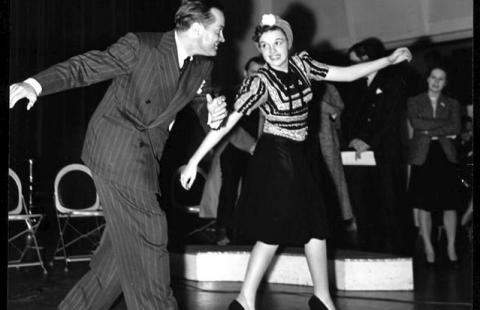
“Here you see three lovely “girls”
With their plastic shapes and curls.
Isn’t it campy? Isn’t it campy?
We’ve got glamour and that’s no lie;
Can’t you tell when we swish by?
Isn’t it campy? Isn’t it campy?”
The words camp and swish being used in the gay subculture and connected to effeminate gay men.
I would have to assume, more than a few transwomen gravitated to these spaces as well.
Even the battlefield itself provided opportunities for gay fraternization. A beach in Guam for example became a secret just for the gay troops, they called it Purple Beach Number 2, after a perfume brand.
This homoerotic space was not confined to the military, but spilled out into civilian life as well.
Donald Vining was a pacifist who stated bluntly his homosexuality to the recruitment board as his mother needed his work earnings, and if you wanted be a conscientious objector you had to apply to go to an objector’s camp. He became something of a soldier chaser, working in the local YMCA and volunteering at the soldier’s canteen in New York he hooked up with soldiers still closeted for a night of passion but many more who were open about who they were.
After the war he was left with a network of gay friends and a strong sense of belonging to a community. It was dangerous tho, he was victim of robberies he could not report because they happened during hook ups, but police were always ready to raid gay bars when they were bored. “It was obvious that [the police] just had to make a few arrests to look busy,” he protested in his diary. “It was a travesty of justice and the workings of the police department (d’Emilio 30).״
Now it might seem odd he was able to plug into a community like that, but over the war underground gay bars appeared across the country for their new clientele. Even the isolated Worcester Mass got a gay bar.
African American men, barred from combat on the front lines, were not entirely barred from the gay subculture in the cities. For example in Harlem the jazz bar Lucky Rendevous was reported in Ebony as whites and blacks “steeped in the swish jargon of its many lavender costumers. (Bronski 149)”
The Other War: Facing Homophobia
“For homosexual soldiers, induction into the military forced a sudden confrontation with their sexuality that highlighted the stigma attached to it and kept it a matter of special concern (d’Emilio 25)”
“They were fighting two wars: one for America, democracy, and freedom; the other for their own survival as homosexuals within the military organization. (Eaklor 68)”
Once they were in, they fell under Article 125 of the Uniform Code of Military Justice: “Any person subject to this chapter who engages in unnatural carnal copulation with another person of the same or opposite sex or with an animal is guilty of sodomy. Penetration, however slight, is sufficient to complete the offense.”
Penalties could include five years hard labour, forced institutionalization or fall under the dreaded Section 8 discharge, a stamp of mental instability that would prevent you from finding meaningful employment in civilian life.
Even if one wanted nothing to do with fulfilling their desires it was still essential to become hyper aware of your presentation and behaviour in order to avoid suspicion.
Coming Home to Gay Ghettos
“The veterans of World War II were the first generation of gay men and women to experience such rapid, dramatic, and widespread changes in their lives as homosexuals. Bronski 154”
After the war many queer servicemen went on to live conventionally heterosexual lives. But many more returned to a much queerer life stateside.
Bob Ruffing would settle down in San Francisco. The city has always been a safe harbour for queer Americans, made more so as ex servicemen gravitated to its liberated atmosphere. The port cities of New York, San Francisco and Los Angeles became the prime destinations to settle. Vining’s partner joined him in New York, where they both immersed themselves in the gay culture.
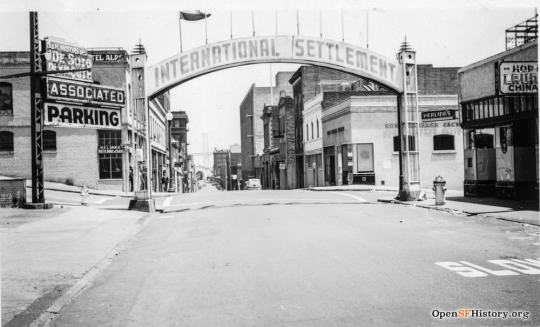
Other soldiers moved to specific neighborhoods known for having small gay communities. San Francisco’s North Beach, the west side of Boston’s Beacon Hill, or New York’s Greenwich Village. Following the war the gay populations of these cities increased dramatically.
The cities offered parks, coffee houses and bars which became queer spaces. And drag performance, music and comedy became features of this culture.
These veterans also founded organizations just for the queer soldiers. In Los Angeles the Knights of the Clock provided a space for same sex inter racial couples. In New York the Veterans Benevolent Association would often see 400-500 homosexuals appear at its events.
A number of books bluntly explored homosexuality following the war, such as The Invisible Glass which tells the story of an inter racial couple in Italy,
“With a slight moan Chick rolled onto his left side, toward the Lieutenant. His finger sought those of the officer’s as they entwined their legs. Their faces met. The breaths, smelling sweet from wine, came in heavy drawn sighs. La Cava grasped the soldier by his waist and drew him tightly to his body. His mouth pressed down until he felt Chick’s lips part. For a moment they lay quietly, holding one another with strained arms.”
Others like Gore Vidal’s The City and the Pillar (1948), Fritz Peters’s The World Next Door (1949), and James Barr’s Quatrefoil (1950) explored similar themes.
In 1948 the Kinsey Report would create a public firestorm by arguing that homosexuality is shockingly common. In 1950 The Mattachine Society, a secretive group of homosexual Stalinists launched America’s LGBT movement.
References:
Michael Bronski “A Queer History of the United States”
John D’emilio “Coming Out Under Fire”
Vivki L Eaklor “Queer America: A GLBT History of America”
~~~~~~~~~~~~~~~~~~~~~~~~~~~~~~~~~~~~~~~~~~~~~~~~~
The Lesbians
In 1947 General Eisenhower told a purple heart winning Sargeant Johhnie Phelps, “It's come to my attention that there are lesbians in the WACs, we need to ferret them out”.
Phelps replied, “"If the General pleases, sir, I'll be happy to do that, but the first name on the list will be mine."
Eisenhower’s secretary added “"If the General pleases, sir, my name will be first and hers will be second."
Join me again May 17 to hear the story of America’s Lesbians during the war.
21 notes
·
View notes
Photo
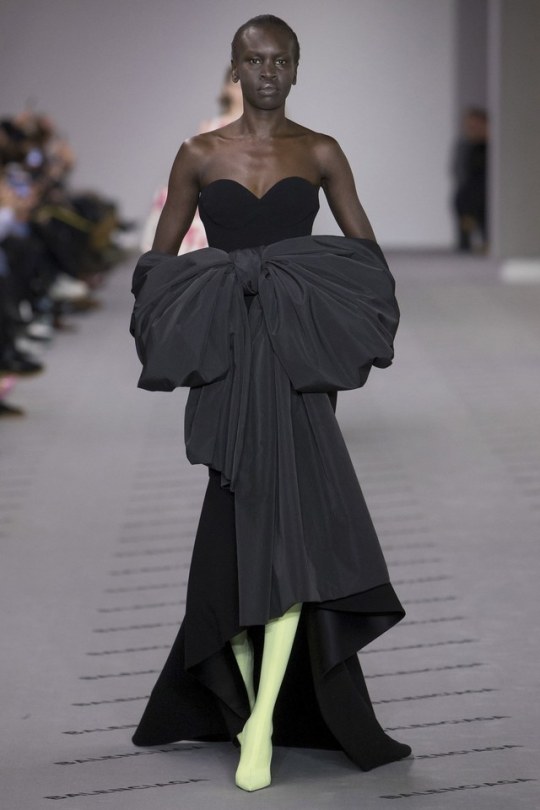
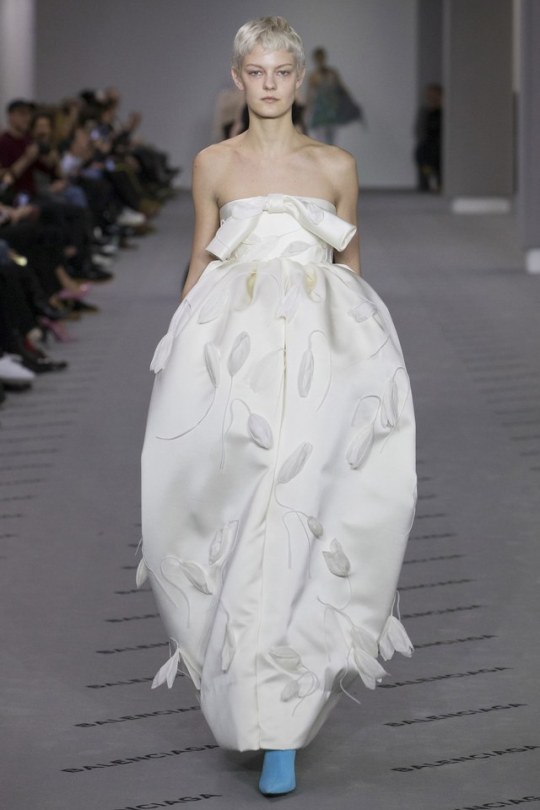

Walt Cessna
You may think you know or understand me from the suggested and often misunderstood visceral & visual tone of my posted work. You MAY, but you will never ever actually come to any sort of conclusion unless you choose and succeed at looking deep into the self polarizing pathos and DIY till I die determination that informs every facet of my creative & hopefully thought provoking artistic, political and personal stance. If your spending an overwhelming period of better utilized time questioning the purpose, passion and correct point of view of those you deem .not on your side and couldn't actually care less about their indifference and non inclusion of your world anyway, it is perhaps time for you to social media disconnect and redirect the inspirational sparks and shared creative synergy that your on-line presence not only inspires, but informs anyone seeking some deeper meaning and lasting purpose regarding the manner and socially awkward mayhem of your experiences and the at times long hesitation of wait and see the final destination of our daily life experiences that we over emphasize through bullet point rifled personally potent postings promoting our self delusional appreciation and understanding of the self stating shared synergy that fuels our current creative desires and the never ending search for a perfect new medium in which to showcase them. Picture frames ans pretty much any type of visual not displaying itself correctly on some sort of screen set at a 3 second shift of images that leaves the pictures haphazardly etched into our conscious. It;s been slightly amusing seeing the often incorrect re-appropriation of my past works that when originally presented labeled me a pornographer of dubious and damaged integrity blithely showing off my ex-hooker, forever a junkie, AIDS relate-able personal drama and self persecution laced presentation of what polite people refer to as my artistic work. Autistic twerk is more like it. It all starts to make sense suddenly and my personally motivated switch of creative mediums comes across casually and gives no hint at others poorly perceived notions of how to maintain, manage and virtually manifest the clearest and most accurate version exactly how, where, when, what & why I am initiating a long awaited and previously posed with move from digital photography to digital film. It's not that photographs or random still images no longer incite inspiration within me, but i have a renewed creative hunger to tell my visually rich, moment caught in time pictorial perceptions of the world as I continue to come upon it in personally nuanced and arresting pictures that often wear their intensity like a much maligned and majorly misconstrued social handicap of frankly preposterous and selfishly painful decrees decrying ,owns own carefully and life long curated correctness. I'm 52 and I've been pretty much taking photographs since I was just dropped out of high school and living part time in the Chelsea Hotel as anti- fashion terrorist and 7th Ave knock off re-designer self publishing the first of 5 indie publication The Key. Al it took was an unsolicited paragraph of self reverential praise to take it from a Xeroxed & hand stapled $1 a copy fast food fashion inspired teen dream novelty to fashion designer approved & super supported legends in their own lifetimes hyper surreal 80s shooting style stars like Norma Kamali & Way bandy introduced Stephen Sprouse to secure is a publishing deal literally on my 18th birthday in what would come to be the best realized and inspired 1984 year of my life. I got to work with the essentially inspired likes of Teri Toye, truly the first notable and visually inescapable Transgender fashion cult level model courtesy of the two other points of a supremely inspired and inspiring collaboration between the three of them as downtown designer, muse & Nico - model, aspired, casually confrontational It girl 80s hybrid that paid due homage to Warjol;s Edie now known as Sprouse & Meisel's fashion franken-weenie of perfect for rthe times sculpted androgyny that wore its scandalous reputation like a badge of maybe it just might be true dis-honor. The late 80s defining Avedon Vogue covers just as world famous make-up artist as his oft times super model before it was deemed hashtag worthy Brooke Sheilds. Way was very approachable, much like most of the pop art world of culturally correct pre-internet celebrities that never had to fear with cell phones and social media to further distract from whatever way out wild and personally soiled to random extinction proclivities of all too often misunderstood or simply ignored, looked on as unnecessary critiques on those who call their arts performing. The 70s / 80s gold plated period of utter pop(t) culture perfection has never been replaced or more relevant. it continues to inform a host of style servers and visual vanguards who set the tone for all we deem fashionable, fierce & transformative. Going back to the good time girl prohibition era flappers and their self professed need / desire to dance their cares away and have the best time of their life till death to the current state of street style inspired rebooted and redefining world of Haute Couture once again inspired and defined by Saint Laurent, Dior and Gucci albeit each famed and style setting house now under radical redefining fashion focus that manages to respectfully pay nu rage homage to the brands history, but seek ways to incorporate the often awkward proportions of urban influenced street style that when seen through the eyes of the Vetements infused mind rewerking the always sublime mod style proportion savvy design mind helming an extremely personal and stylishly over wrought almost radical re-imagining of the deeply respected and ultra icronic experimental & visionary couture house Balenciaga..There were skirts fashion from actual and completely randomly sourced car mats deftly shuffled into a collection that closed with 9 over the top and way over-sized almost to the point of unwearable proportions that instantly achieve Avedon photo moment in fashion history correctness as they unapologetic-ally praise the design notion of ultra future modern vintage retro photograph of culturally current creations that take inspiration from bold silhouettes and a generous, almost overly lavish attention to cut and proportion that in some cases requires the pop kulture class-ism of 60's Irving Penn influenced and perfectly posed presence of the cult model of Funny Fave infamous-ness Dovima to pull off with a level of panache and a heightened sense of strictly amplified drama punctuated by perfectly arched eyebrows framing equally attentive and slightly rich bitch super vixen fierceness that can't be faked unless it;s Evita moment Mario Testino in his 90s Vanity Fair primed for all time Madonna. People who talk shit about the should hsve known better bitch i'm Madonna. Looking at the aggressively fearless proponents of radically almost unwearable proportions executed in a modern assimilation of not always unawkward siljouettes that altrhough not as gar out and frankly unbothered by anything other than it;s own correctness Comme des Garcon, rather a redefined riff on the retro notions of business attire and women wearing versions of men's tailoring, sparked by YSL in his properly Helmut Newton 70s style blip of his Le Smoking tuxedo influenced suits further pushed into androgyny by slicked back short hair cuts that forever set the standard for Bowie pioneered gender bending ensembles that were majorly loathed or deeply loved when first introduced. The insane radical yet pop culturally relevant instantly pop cult classic correctness of Ziggy Stardust seamlessly morphed into YSl man tailored sexually ambiguous models mane even more infamous in their provocative, often sexually charge/d photographs often shot in dark Parisian alleys and dramatically street light lit lending an air of instant style reformation of perfectly potent only werked correctly in the 70;s mix of lady like femininity mixed with an elegantly irreverent masculine tailoring that too easily wrought to mind the gay disco dollies not yet commonly referred to as lesbians, yet unflinchingly setting the style trend that made Helmut Newton dangerously exotic and first introduce the idea of super exclusively expensive made by hand atelier attended Haute Couture that today seems more Ready-to-Couture with it;s street styled leanings and brave style assertions that are elegantly askance. The often classic attention to cut and uber refined measures of stitching that further accented the carefully crafted couture cut that is nothing like your basic, badly cut and boring boxy jacket. The New Look symbolized and introduced Christian Dior's legendary post war arrival that stirred a full on fashion freak out for bucking war time fabric restrictions with liberated and lavish for the times over indulgences of fabric measured by multiple yards and a retro regal stance when wearing the often sharply pinched and flared waist suit jackets that had a multi gored and just above the ankle length skirt that every designer in time since had offered their own version. Print Vogue is a bore, but vogue.com gives you every single look shown during global fashion week and to the point well worded break downs freshly devoid of attitude and detail driven to blogger extremes. This just finished past season was over loaded with a plethora of just the right dose of retro inspired vintage sportswear taken to wryly ironic or deathly drastic extremes. Which is probably why I love it and have actually been inspired to write fashion inspired posts in over a decade. - Walt Cessna
Balenciaga Fall / Winter 2017
10 notes
·
View notes